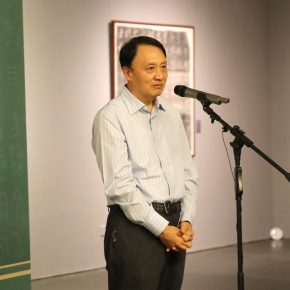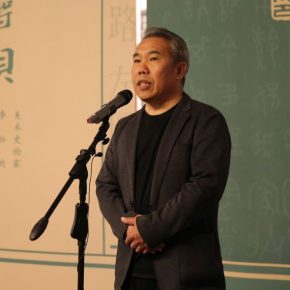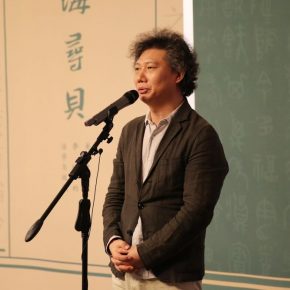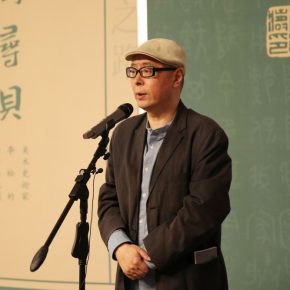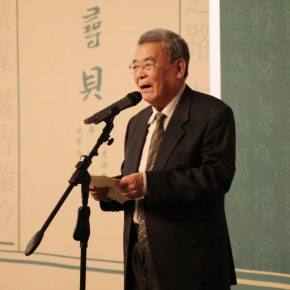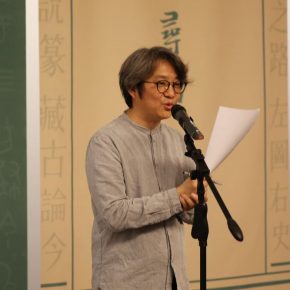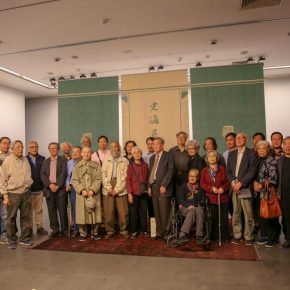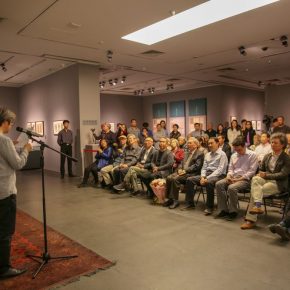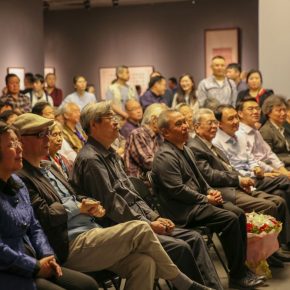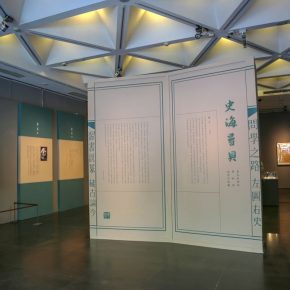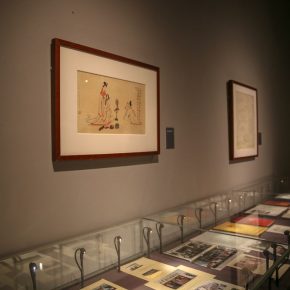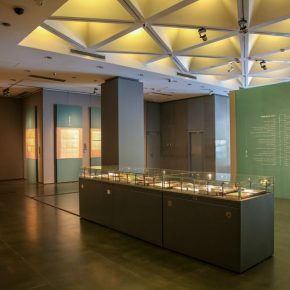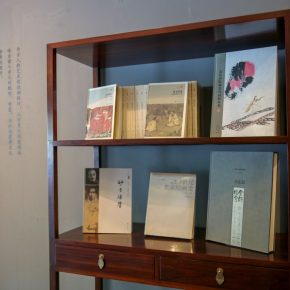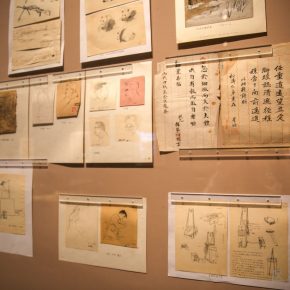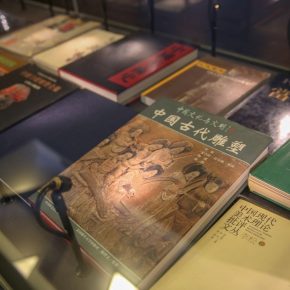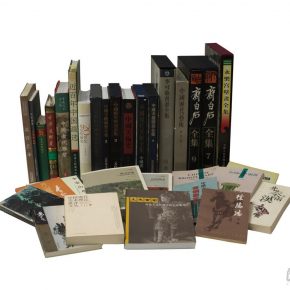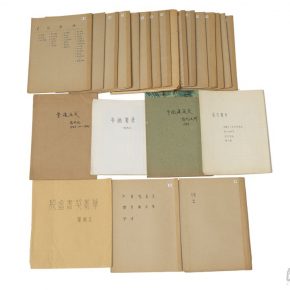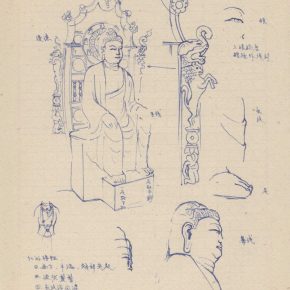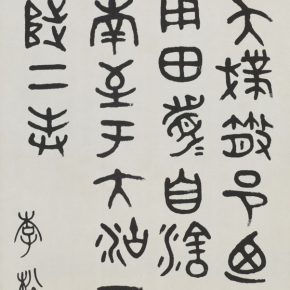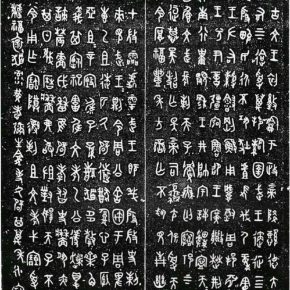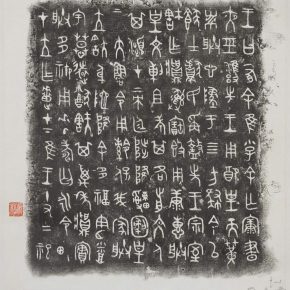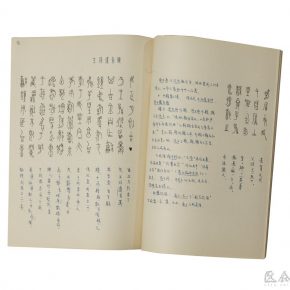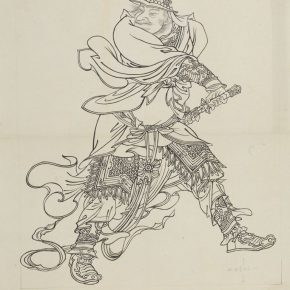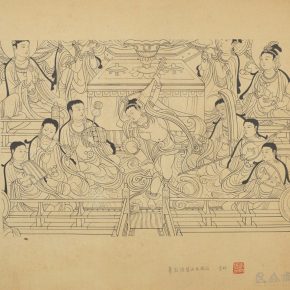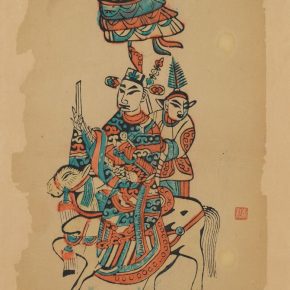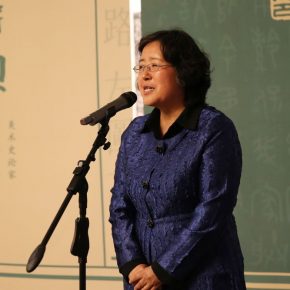
We are accustomed to the exhibitions of visual artists such as oil painters and sculptors, while a solo exhibition of a theorist is hardly ever seen. A solo exhibition of an art historian has expanded the visual effect to the profound spiritual connotation. “Searching for Treasures from History – Art Historian Li Song’s Scholarships and Collections” was hosted at the Beijing Fine Art Academy at 10:00 am on 9 May 2018, by China Artists Association, CAFA and Beijing Fine Art Academy. Li Song’s monographs, calligraphies, copies of paintings, creations, and collections are all presented, and it is the first time to hold a comprehensive exhibition on a theorist. The exhibition aims to comprehensively demonstrate the artistic achievements and the life status of an art theorist. It hopes to inspire younger generations to pass on the spirit of the scholarship, cultivate personality and the dedication of Chinese arts.
Born in Yangliuqing, Tianjin, in January 1932, Li Song was originally named Li Songtao. He took in the Southern Working Group, and was engaged in the print of textual material, photography and fine arts at Guangdong Military Academy. He was admitted to CAFA at the age of 25 and studied in the Department of Art History and Department of Chinese Painting, and he then taught at CAFA as an assistant teacher and the secretary of the department after graduation, in addition, he was an editor of “Art Research”. He transferred to the China Artists Association at the age of 44, and he then served as the Deputy Editor-in-Chief of the “Fine Art” magazine, and Editor-in-Chief of “Chinese Art”, and President of the Fine Art magazine. Li Song said that he was an editor and a teacher over the past several decades. In 2008, Li Song was awarded the “Outstanding Art Historian” Award by the China Artists Association.
At 10:00 am on May 9, 2018, the opening ceremony of the exhibition “Searching for Treasures from History – Art Historian Li Song’s Scholarships and Collections” was launched. Many honored guests including Vice Chairman of the China Artists Association, Chairman of the Beijing Artists Association and Director of the Art Committee of the Beijing Fine Art Academy, Wang Mingming, Deputy Party Secretary of CAFA, Wang Shaojun, the well-known art theorist Shao Dazhen, Deputy Dean of the School of Humanities, CAFA, Li Jun, President and Editor-in-chief of “Fine Art” magazine of the China Artists Association, Shang Hui, Deputy Director of National Art Museum of China, An Yuanyuan, and Li Song all delivered a speech at the opening ceremony. Deputy Dean of the Beijing Fine Art Academy and Director of the Art Museum of Beijing Fine Art Academy, Wu Hongliang, hosted the opening ceremony. Because Li Song has donated a total of more than 100 stone rubbing tablets and tiles to the Beijing Fine Art Academy, Party Secretary of the Beijing Fine Art Academy, Liu Baohua, presented Li Song a collection certificate on behalf of the academy at the end of the opening ceremony.
Li Song is one of the first-generation art theorists since the discipline of art history was established. He has edited and co-edited many large-scale books of art history in China such as “Encyclopedia of China • Fine Arts”, “Chinese History of Civilization”, “Complete Works of World Art”, “Chinese History of Art” and so on. He is one of the most accomplished writers of art history in China.
This exhibition is divided into four parts, including “The Road of Learning”, “Graphics and History”, “Practicing of Chinese Calligraphy”, and “Collections of Antiques and Current Theories”. It gathers more than 100 pieces covering compositions, articles, Chinese calligraphy, copies and creations of paintings, collections, manuscripts, rubbings, letters, etc., including the complete manuscripts of Li Song’s important monographs “Research on Chinese Bronze Art”, “Chinese History of Art” and “Xu Beihong’s Chronicle”, as well as the letters between him and Wang Chaowen, Hua Junwu, Wu Zuoren, He Youzhi and so on. In addition, it is the first time that rubbings of steles he collected are presented and on show.
“The Road of Learning” presents Li Song’s artistic attempts during his youth and he assiduously studied the history of art when he was a teaching assistant and teacher. He has been acquainted with various art forms, and particularly loved reading literary and historical books, and he has also published poetry in a poetry periodical. He was obsessive with art and literature, which has led to an accumulation of work during his career. Li Song has published a large number of books. And his research focus on three aspects: the art of Xia, Shang and Zhou dynasties, which focuses on bronze art, which has been expanded to his research and creation of bronze inscriptions; Chinese history of sculptures and the study of Chinese painting.
His method of research on the history of art was an inherited method from the older-generation historians who paid attention to the comparison between literature and physical objects. The process of drawing and recording is regarded as the process of research. A large number of beautiful and accurate images on his study notes are also presented at the exhibition. The experiences and problems at that time are intuitively and informatively recorded by the images and texts.
In terms of the study and research of Chinese painting, he graduated with honors from the Department of Chinese Painting, CAFA, and learned from Li Keran, Li Kuchan and Liu Lingcang. In this exhibition, the exhibition presents Li Song’s line drawings, which are not only part of the study of Chinese painting, but also the creation of his artistic practice.
Li Song said that in the process of practicing Chinese characters, he tried to figure out the mind of the older generation when they constructed a character, wrote a character, and made a seal, striving to maintain a vivid ancient style. Therefore, he suggested the exhibition used his seal scripts to present the context of ancient seal scripts, rather than highlighting his achievements in calligraphy, so that it provided the audience with historical knowledge.
Li Song once learned from an old man who was good at rubbing, when he was a pupil. He personally created rubbings of steles in his hometown during that period, and he was fascinated with the history and the art of writing which have been maintained in the rubbing, and later he collected a large number of rubbings of steles and tiles. In order to make these collections play an academic role, and help other people, he has actively offered more than 100 pieces to Beijing Fine Art Academy.
Through these four parts, the exhibition has fully showcased the academic achievements and life status of an art theorist, and has encouraged the young art theorists and scholars to move forwards with their own research under guidance of the senior artist and theorist. The exhibition continues to 20 May.
Text edited by Zhang Yizhi, translated by Chen Peihua and edited by Sue/CAFA ART INFO
Images of the works courtesy of the organizer


